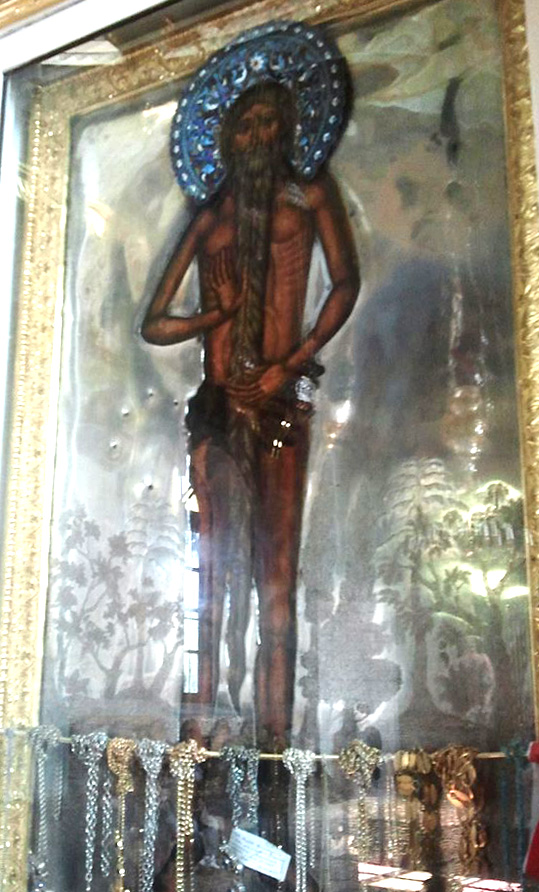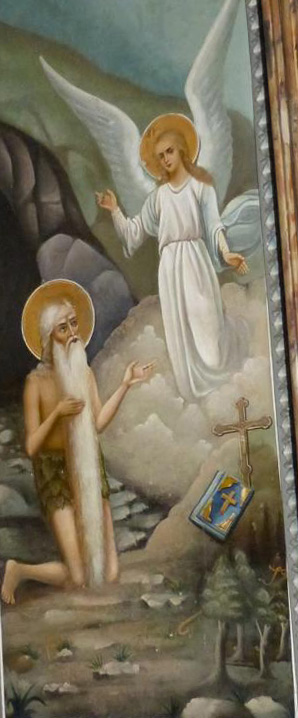Then suddenly I saw a man coming to me who looked like a wild beast. He was frightening in appearance, hairy over all of his body, with a skirt of leaves. As he approached me I was seized with terror and feared he might kill me. I ran to the top of a hill, but he went to its base, crouched down…, looked up to me, and said, "Come down to me, most holy man, for I am a man living like you in this desolate solitude for the love of God."1The man goes on to explain that he has lived as a hermit for sixty years in this desert. Previously he had been in a monastery in the Thebaid with 100 holy brothers, but considering the example of the prophets Elijah and John the Baptist, he decided to take up the life of a hermit. His guardian angel led him to the cave where he was to dwell and has been bringing him a bit of bread and water every evening and the Eucharist on Saturdays and Sundays. Paphnutius stays with Onuphrius a short while until the latter's death, which is attended by the song of angels.
Many Western portraits of St. Onuphrius include the copious hair mentioned by Paphnutius. Orthodox images strive for a greater dignity, reducing the hairiness to just a long beard and retaining the skirt of leaves. The two Onuphrius images I have seen in Venice follow the Orthodox approach.
Prepared in 2016 by Richard Stracke, Emeritus Professor of English, Augusta University. Revised 2019-03-19.
HOME PAGE

St. Onuphrius as depicted among a number of confessors in the 14th-century Spanish Trinity Adored by All Saints.

This is how the saint is usually depicted in Orthodox images – with the leafy skirt mentioned in Paphnutius but without the hair on his body. (Source: Wikimedia Commons.)

A 19th-century fresco of St. Onophrius and his guardian angel in the Akeldama Orthodox Monastery in Jerusalem. (Source: Wikimedia Commons.)
MORE IMAGES
- 1371: On the left in Giovanni Bonsi's Madonna Enthroned with Saints
- Two Venetian paintings that avoid the hair-all-over portraiture: this portrait in the Church of San Sebastian and this Madonna and Child on display in the Ca' d'Oro.
DATES
- Feast day: June 12
NAMES
- The English name "Humphrey" derives from "Onuphrius," as does the Italian Onofrio.
BIOGRAPHY
- Acta Sanctorum, June vol. 2, 519-533. (The memoir starts at p. 527.)
- Butler's comments (II, 528-29) include a short bibliography of other sources on this saint.
- Paphnutius, Life of St. Onuphrius: A Latin translation from the Greek is in Migne, LXXIII, 212-222. There is also an English translation of the Coptic version.
NOTES
1 Acta Sanctorum, June vol. 2, 527-28 (my translation).